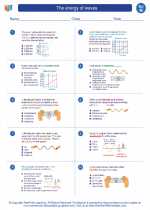Aquifers: Definition and Characteristics
An aquifer is an underground layer of permeable rock, gravel, or sand that can hold or transmit groundwater. It is a vital natural resource that provides water for drinking, irrigation, and industrial purposes.
Types of Aquifers
There are two main types of aquifers:
- Unconfined Aquifer: An unconfined aquifer is not restricted by an impermeable layer of rock or soil above it, allowing water to easily seep into it from the ground surface.
- Confined Aquifer: In contrast, a confined aquifer is situated between impermeable rock layers, which prevents water from easily entering or exiting the aquifer. This results in higher water pressure within the confined aquifer.
Formation of Aquifers
Aquifers are typically formed through the process of porous media deposition, where sediments such as sand, gravel, and rock fragments accumulate over time. The spaces between these materials allow water to percolate through and be stored within the aquifer.
Study Guide
Key Concepts to Understand:
- The definition and function of an aquifer
- The differences between unconfined and confined aquifers
- The formation process of aquifers
Study Tips:
- Use diagrams and visual aids to understand the structure and characteristics of aquifers
- Review real-world examples of how aquifers are utilized for water supply
- Understand the factors that can affect the recharge and depletion of aquifers, such as human activities and climate changes
Sample Questions:
- What is the primary function of an aquifer?
- Compare and contrast unconfined and confined aquifers.
- Explain the process of aquifer formation and the role of porous media deposition.






